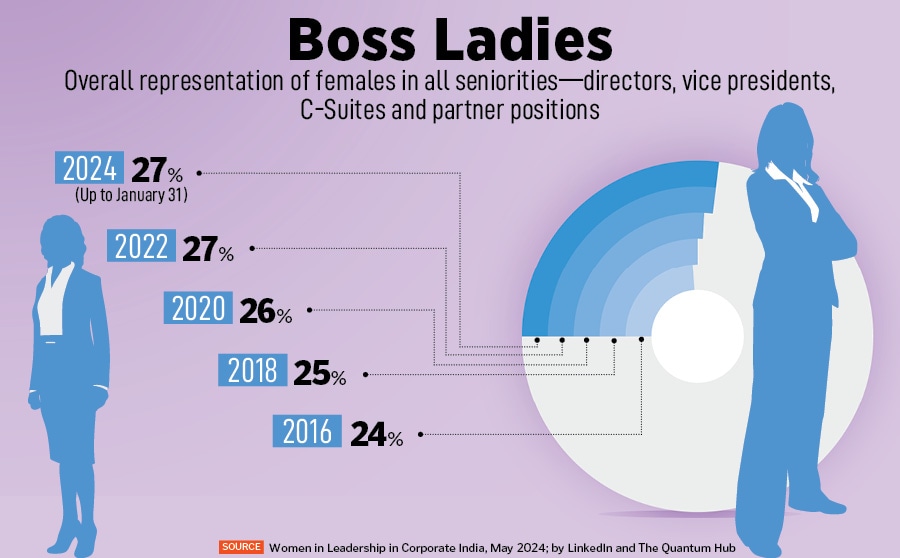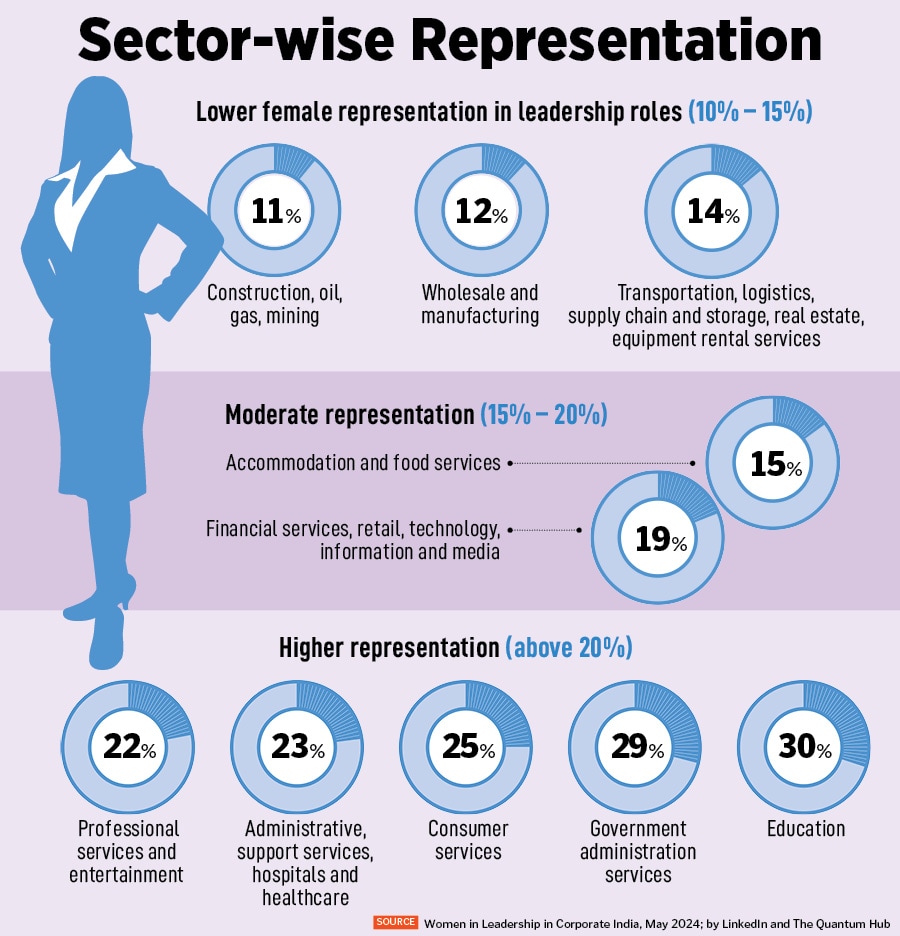More Indian women in senior roles, but their elevation to leadership positions still slow: Report
While there is a relatively higher representation of women at the entry levels, a drop occurs as they progress to higher managerial roles or as vice presidents, and other C-suite positions, according to a LinkedIn and The Quantum Hub report
 There has been an increase in the overall representation of females in all seniorities, however, the progress in elevating women to senior leadership positions has been slow, states a new report. Image: Shutterstock
There has been an increase in the overall representation of females in all seniorities, however, the progress in elevating women to senior leadership positions has been slow, states a new report. Image: Shutterstock
Gender diversity in the workplace is making slow-but-steady progress, according to a new report released on Thursday by LinkedIn and The Quantum Hub, a public policy research firm.
There has been an increase in the overall representation of females in all seniorities—directors, vice presidents, C-suites, and partner positions—rising from 24 percent in 2016 to 26 percent by 2020, and 27 percent in 2024.
However, the progress in elevating women to senior leadership positions has been slow. It increased from 17 percent in 2016 to 19 percent in 2022, but then dipped slightly to 18 percent in 2024. This may self-correct as the year progresses, as per the report.
The analysis is based on self-reported data available on employment-focussed social media platform LinkedIn, collating trends from over a billion members across 41,000 skills; 67 million companies; and 133,000 schools globally.
The report also specifically looked at insights into women in leadership emerging from Indian users and companies. It found that when it comes to hiring women for leadership roles, in 2016, 19 percent were brought on board, and it increased to 25 percent in 2021; however, it dipped by January 2024 to 23 percent.



















